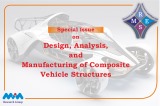Research Article
Influence of interventions on the seismic performance of URM buildings designed according to pre-modern codes
Neritan Shkodrani1, Hüseyin Bilgin2, Marjo Hysenlliu1
1Department of Civil Engineering, Polytechnic University of Tirana, Albania
2Department of Civil Engineering, Epoka University, Tirana, Albania
Keywords
Abstract
URM buildings;
Pushover analysis;
2019 Albania Earthquake;
Template projects
On November 26,2019, an earthquake of magnitude 6.4 hit Durres city, Albania. After the earthquake, the inspection carried out by the authors in the region has provided relevant findings regarding the methods of construction, quality of the materials and the performance of structures. The dominant building types in the Albanian building stock comprise unreinforced masonry (URM) structures with load-bearing masonry walls. These units suffered the worst damage. Dynamic response of masonry is highly nonlinear, and generally shows high vulnerability to seismic loading. Moreover, many buildings of these type have undergone structural interventions like adding floors, or wall openings, especially in the first floors of the buildings, which are parallel to the main roads, because of great demand for shops and stores. This paper aims at making seismic performance assessment of the intervened buildings based on macro-element modeling approach. Due to its efficiency, this approach is becoming popular among the practitioners and field experts in this area and allows simulating the non-linear behavior of masonry buildings. This method is applied to two old masonry buildings from the Albanian construction practice that are representatives of mid-size residential buildings with and without interventions. It must be said that in Albania, masonry buildings have been built using templates all over the country, so both models with and without intervention are common. Capacity curves of the investigated buildings are derived to assess the most probable seismic response of the investigated housing construction in the region as well as to evaluate the seismic performance of the tested structures.
© 2021 MIM Research Group. All rights reserved.

